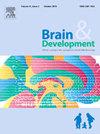Long-term outcome prediction after pediatric cardiac arrest by continuous electroencephalography
IF 1.3
4区 医学
Q4 CLINICAL NEUROLOGY
引用次数: 0
Abstract
Objective
Continuous electroencephalography (cEEG) features after cardiac arrest (CA) are associated with short-term outcome predictions. However, the association between cEEG features and long-term neurobehavioral outcomes in children remains unclear. This study aimed to identify cEEG features that can accurately predict neurobehavioral outcomes in children 6 months after CA.
Methods
A single-center, retrospective, observational study was performed at the tertiary care pediatric intensive care unit (PICU) of a national children's hospital. This study included a consecutive cohort of children admitted to the PICU after CA who underwent cEEG monitoring. The initial EEG background, electrographic seizures, and changes in EEG background over time were documented for each time point. The primary outcome was neurobehavioral outcomes at 6 months after resuscitation. To assess the reliability of the predictive model, the area under the receiver operating characteristic curve (AUROC) of models was compared for different combinations of EEG features.
Results
The study included 62 infants and children. Unfavorable neurobehavioral outcomes were reported in 39 patients (63 %), including mortality in 20 patients. The combination of initial EEG background category and the EEG change from initial EEG initiation to 24 h, or variability/reactivity alone, were minimal optimal predictive models for unfavorable neurobehavioral outcomes at 6 months (AUROC, 0.99 [95 % confidence interval, 0.98–1.00], and 0.99 [95 % confidence interval 0.97–1.00], respectively).
Conclusions
Early cEEG features in the PICU can accurately predict neurobehavioral outcomes in children at 6 months after CA. These results can enhance prognostication and guide clinical decision-making in pediatric CA cases.
用连续脑电图预测小儿心脏骤停后的长期预后
目的心脏骤停(CA)后连续脑电图(cEEG)特征与短期预后预测相关。然而,脑电图特征与儿童长期神经行为结果之间的关系尚不清楚。本研究旨在确定脑电图特征可以准确预测ca后6个月儿童的神经行为结局。方法在某国家儿童医院三级儿科重症监护病房(PICU)进行单中心、回顾性、观察性研究。本研究包括一组连续接受脑电图监测的CA后入住PICU的儿童。记录每个时间点的初始脑电图背景、电图癫痫发作和脑电图背景随时间的变化。主要转归是复苏后6个月的神经行为转归。为了评估预测模型的可靠性,比较了不同脑电特征组合下模型的接收者工作特征曲线下面积(AUROC)。结果研究对象为62名婴幼儿。39例(63%)患者报告了不良的神经行为结果,包括20例死亡。初始脑电图背景类别和从初始脑电图开始到24小时的脑电图变化的组合,或单独的变异性/反应性,是6个月时不良神经行为结局的最小最佳预测模型(AUROC分别为0.99[95%置信区间,0.98-1.00]和0.99[95%置信区间,0.97-1.00])。结论PICU早期脑电图特征能准确预测CA后6个月患儿的神经行为结局,对小儿CA的预后有一定的指导作用。
本文章由计算机程序翻译,如有差异,请以英文原文为准。
求助全文
约1分钟内获得全文
求助全文
来源期刊

Brain & Development
医学-临床神经学
CiteScore
3.60
自引率
0.00%
发文量
153
审稿时长
50 days
期刊介绍:
Brain and Development (ISSN 0387-7604) is the Official Journal of the Japanese Society of Child Neurology, and is aimed to promote clinical child neurology and developmental neuroscience.
The journal is devoted to publishing Review Articles, Full Length Original Papers, Case Reports and Letters to the Editor in the field of Child Neurology and related sciences. Proceedings of meetings, and professional announcements will be published at the Editor''s discretion. Letters concerning articles published in Brain and Development and other relevant issues are also welcome.
 求助内容:
求助内容: 应助结果提醒方式:
应助结果提醒方式:


